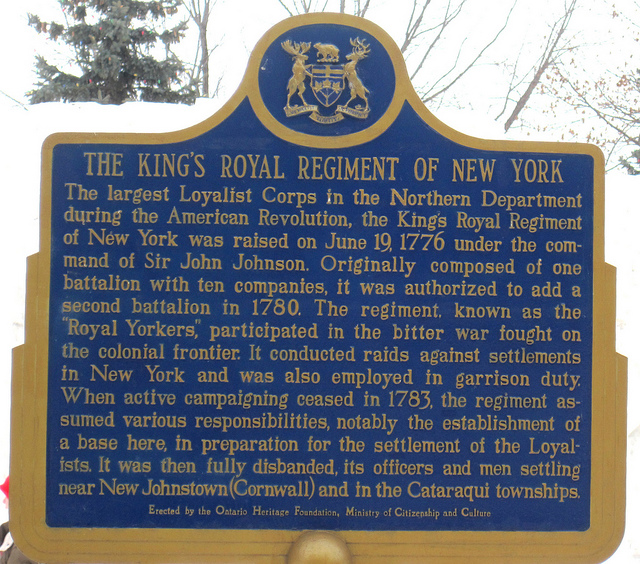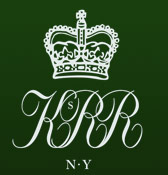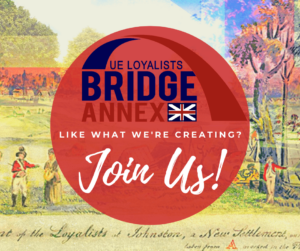There were both Regular and Provincial units that fought on behalf of the British, and King George III, learn more from the resources found on this page. As part of UELAC 2021, we are also featuring the military units that settled in Stormont, Dundas, and Glengarry (SDG) Counties, the host region for this virtual conference and historic event. Additionally, the disbanded Loyalist soldiers who settled in SDG, went on to fight in the War of 1812, which is also highlighted on this page.
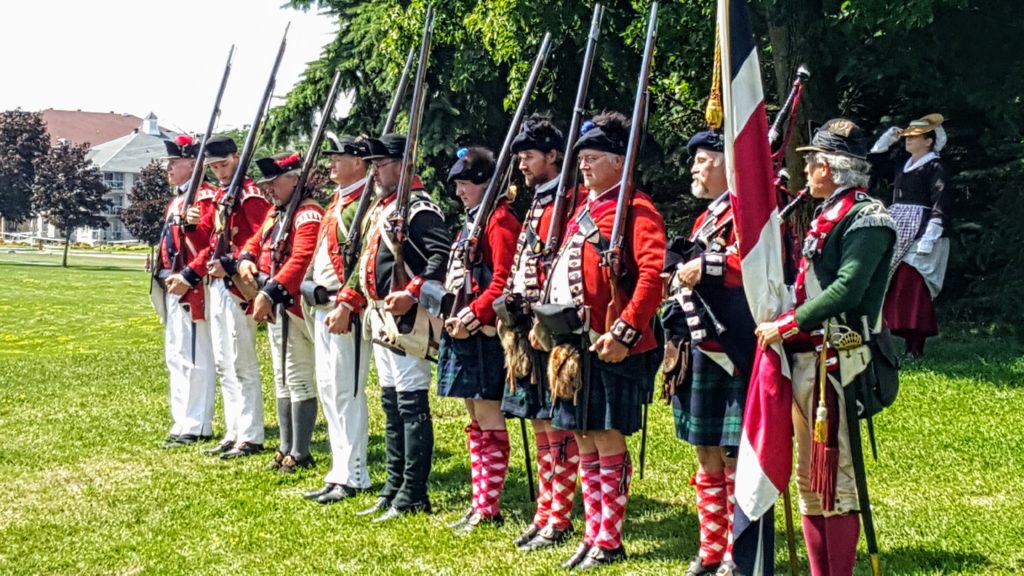
KRRNY (Provincial) and 84th Regiment of Foot (Regular)
Loyal (or British American) Provincial Regiments
Loyalist Regiments were formed and raised in the North American colonies during the American Revolution. The men were mostly people who lived in the colonies, and whatever the motivation, joined the King’s forces.
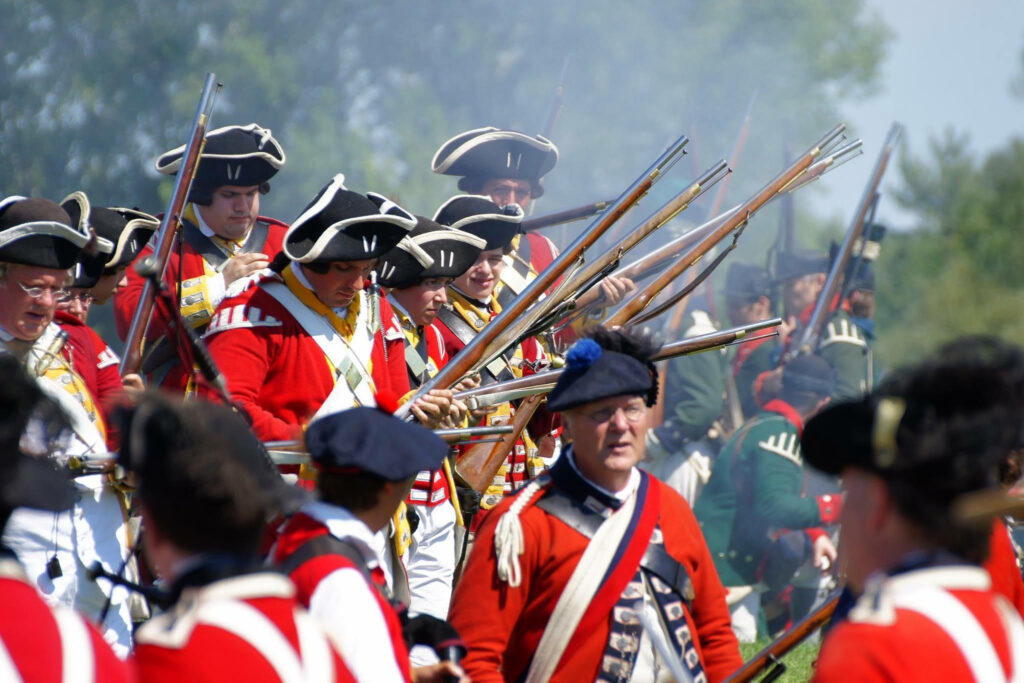
Regular Unit shown in background. Provincial Unit foreground.
British Regular Units
British Regular Units fought in the American Revolution. Some units had been posted in the colonies (both the thirteen which eventually split away, or the four which remained British) before the war, others were shipped in to participate and others were created during the War.
Learn more about British/Loyalist Military:
The On-Line Institute for Advanced Loyalist Studies
Loyalist Collection (Library and Archives Canada)
IMAGES: See the Canadian War Museum Collection of American Revolution Artifacts 1775-1783 (Canadian War Museum)

“The King’s Royal Regiment of New York, also known as Johnson’s Royal Regiment of New York, King’s Royal Regiment, King’s Royal Yorkers, and Royal Greens, were one of the first Loyalist regiments, raised on June 19, 1776, in British Canada, during the American Revolutionary War.
The King’s Royal Regiment of New York was formed by exiled Loyalist leader, Sir John Johnson, from American refugees, fleeing rebel persecution, the regiment served with distinction throughout the war, launching raids and relief missions into the Mohawk Valley of New York.
The regiment was instrumental in the siege of Fort Stanwix, during the expedition of Colonel Barry St. Leger, down the Mohawk River Valley, in the summer of 1777, and saw action, that same year, in the Saratoga Campaign, at the Battle of Oriskany, Carleton’ s Raid, in 1778, and the devastating raid on the Schoharie Valley, in 1780. Along with American Indian allies and fellow provincial regiments, such as Butler’s Rangers, the regiment fought a series of low-level raiding campaigns, through the Mohawk Valley. This region was a major agricultural area of New York, and these raids were intended to interdict the supply of foodstuffs to General George Washington’s army while pressuring the Revolution’s political leaders in the region, who were actively persecuting Loyalist residents as traitors aiding and supplying British troops.
The regiment eventually comprised two battalions. Following the war, the first battalion was disbanded in 1783 and the second battalion in 1784. Members of the regiment relocated to the British province of Quebec. They were granted land along the St. Lawrence River valley and Bay of Quinte, today within the province of Ontario in Canada.” (Wikipedia)
King’s Royal Regiment of New York (KRRNY) (Wikipedia)
IMAGES: Service Dress Coatee – Uniform of Lieutenant Jeremiah French, 2nd Battalion, King’s Royal Regiment of New York (Canadian War Museum)
IMAGE: Breeches – Uniform of Lieutenant Jeremiah French, 2nd Battalion, King’s Royal Regiment of New York (Canadian War Museum)
Video Drill Manual
This series of videos provide an excellent demonstration of military protocols (click image above)
With music used by permission, courtesy of the Fifes and Drums of the 41st Regiment of Foot (at Fort George).

84th Royal Highland Emigrants History
84th Royal Highland Emigrants Uniform
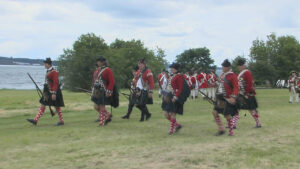
“The 84th Regiment of Foot (Royal Highland Emigrants) was a British regiment in the American Revolutionary War that was raised to defend present day Ontario, Quebec and Atlantic Canada from the constant land and sea attacks by American Revolutionaries. The 84th Regiment was also involved in offensive action in the Thirteen Colonies; including North Carolina, South Carolina, Georgia, Virginia and what is now Maine, as well as raids upon Lake Champlain and the Mohawk Valley. The regiment consisted of 2,000 men in twenty companies. The 84th Regiment was raised from Scottish soldiers who had served in the Seven Years’ War and stayed in North America. As a result, the 84th Regiment had one of the oldest and most experienced officer corps of any regiment in North America. The Scottish Highland regiments were a key element of the British Army in the American Revolution. The 84th Regiment was clothed, armed and accoutred the same as the Black Watch, with Lieutenant Colonel Allan Maclean commanding the first battalion and Major General John Small of Strathardle commanding the second. The two Battalions operated independently of each other and saw little action together.” (Wikipedia)

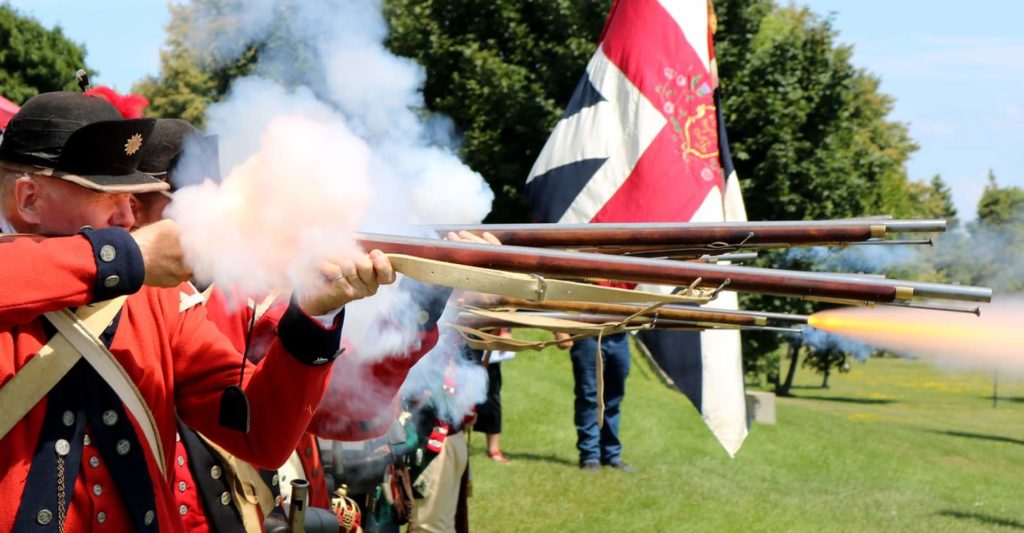
Photo: Cornwall Tourism. Honor guard firing at Loyalist plaque dedication. Cornwall, ON
Major Battles & Engagements of the American Revolution (1775-1783)
American Revolution – Invasion of Canada by D.N. Sprague (Canadian Encyclopedia; Updated 2015)
Burgoyne’s Campaign: June-October 1777 (Fort Stanwix; National Park Service NPS)
1777 Saratoga Campaign (American Battlefields)
Battle of Oriskany (NY) 1777 (American Battlefield Trust)
Battle of Brandywine 1777 (Pennsylvania) (American Battlefields Trust)
Burning of the Valleys Campaign (New York) 1780
Timeline for 1780 by Gerald Horton (threerivershms)
Horton’s History Articles about the American Revolution in the Hudson, Mohawk, Schoharie Valleys (threerivershms)
Top 10 Battles of the Revolutionary War by


Those who had arrived in Canada as United Empire Loyalists were not yet done with war. During the War of 1812 (1812-1814), many were engaged once again in meeting their family, and former friends and neighbours in conflict…but this time, the war would define them as defenders of the new futures they were building in Canada.
Special Event June 12 & 13, 2021
Loyalist Township (Ontario)
Join virtually!
Explore the War of 1812 Virtual Exhibit at the Canadian War Museum
1812: One War, Four Perspectives
Experience the War of 1812 on-line from the perspective of each of its major participants—Americans, the British, Canadians (including Canadian First Peoples), and Native Americans. Using historic objects and images, this virtual exhibition allows you to draw your own conclusions and share your own perspective on a major historical event.
VIDEO: War of Independence | Canada: The Story of Us, Full Episode 3 (CBC)
The graves of veterans of the War of 1812 have never been recognized nationally and by doing so, we will bring an awareness of this time in our history to light in communities that have no other link to the War of 1812.
This project will provide a data base of biographical information on thousands of veterans of the War of 1812, a data base that presently does not exist, and one that will be a boon to future research by students of our history.
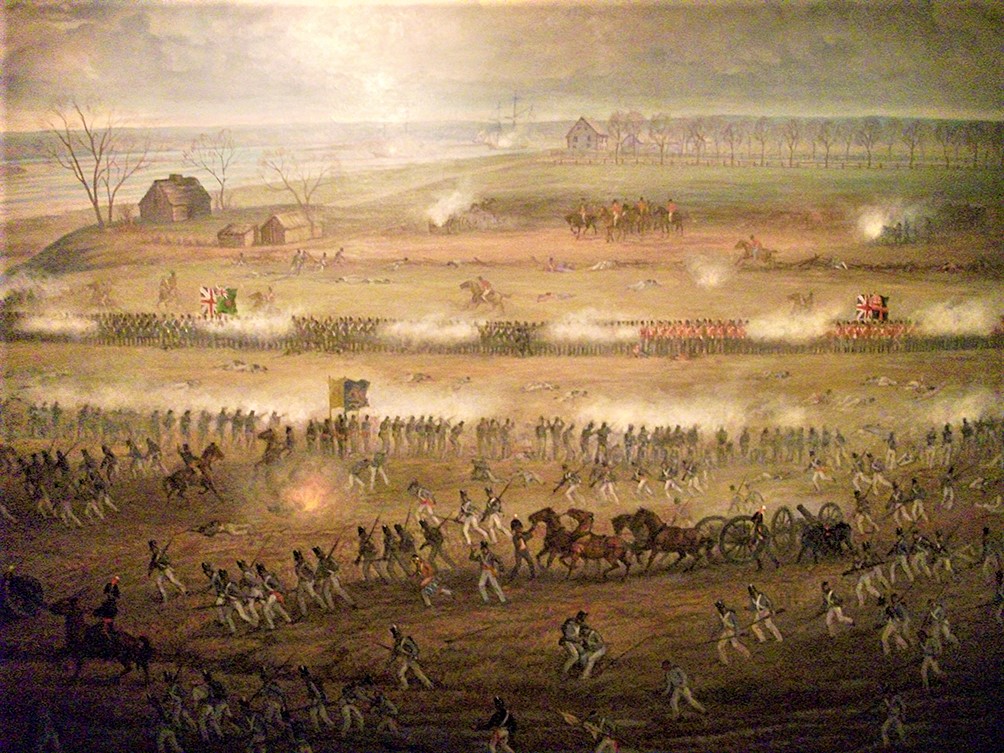
Panoramic Image can be viewed at Battle of Crysler’s Farm Visitor Centre. Morrisburg, ON
Battle of Crysler’s Farm
Located in Dundas County, along the St. Lawrence River, the Battle of Crysler’s Farm on November 11, 1813 was fought on both land and water. Hundreds of combatants descended upon the once tranquil farm of John Crysler and his family…by the end of the mass battle, hundreds were lost.
Also learn about the nearby Skirmish of Hoople’s Creek on November 10, 1813
Battle of Crysler’s Farm – Canadian Encyclopedia
The Battle that Saved Canada – Friends of Crysler’s Farm Battlefield
Battle of Crysler’s Farm – Wikipedia
War of 1812 Battle Timeline: October 1813 – December 1813 – Canada’s Historic Places

